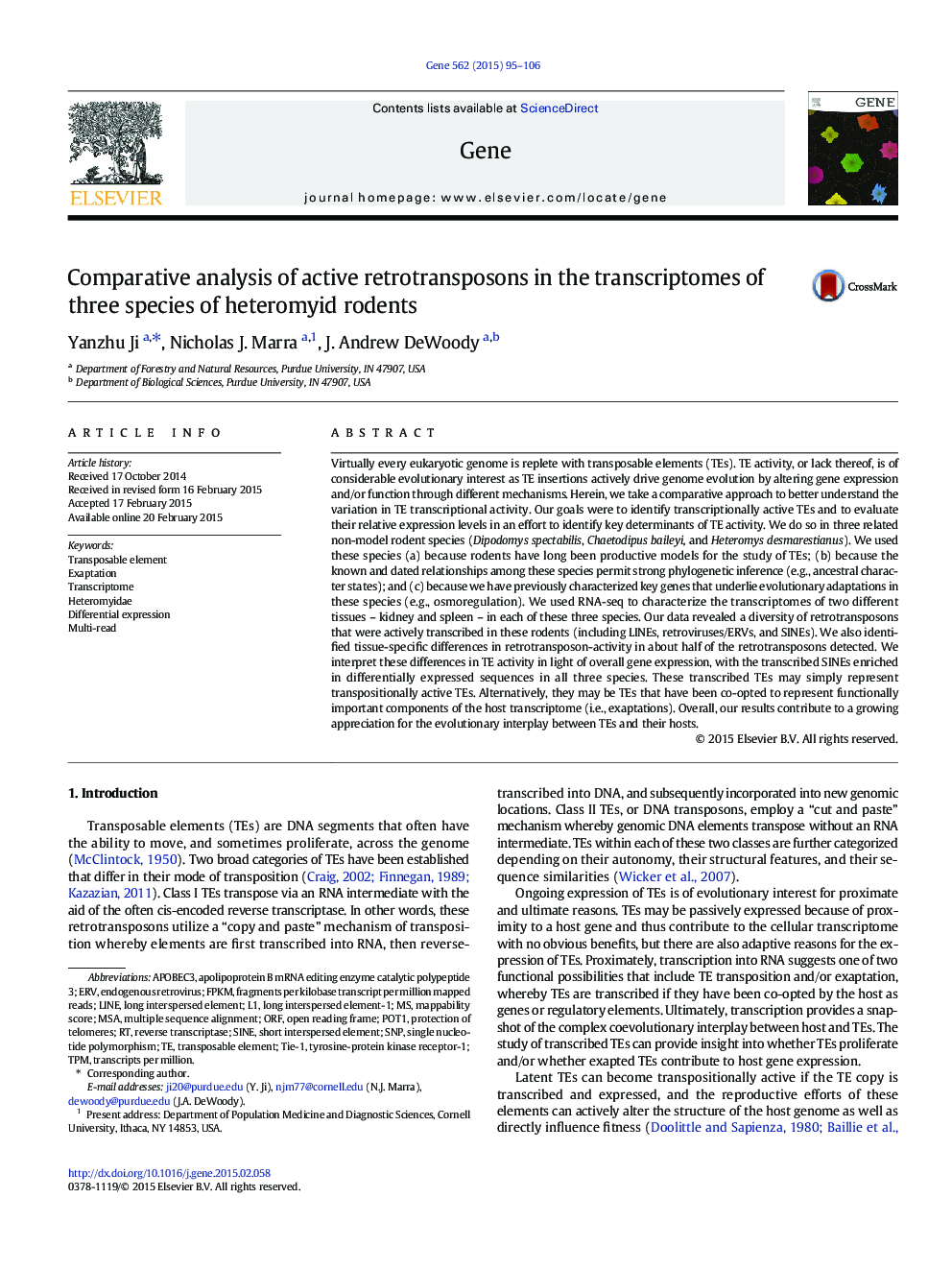| کد مقاله | کد نشریه | سال انتشار | مقاله انگلیسی | نسخه تمام متن |
|---|---|---|---|---|
| 2815761 | 1159890 | 2015 | 12 صفحه PDF | دانلود رایگان |
• We sequenced transcriptomes of kidney and spleen in three rodent species.
• We detected retrotransposon transcripts including SINEs, LINEs and ERVs.
• Some retrotransposon transcripts were differentially expressed (DE) among tissues.
• The retrotransposon transcripts were enriched in DE-ed transcripts.
Virtually every eukaryotic genome is replete with transposable elements (TEs). TE activity, or lack thereof, is of considerable evolutionary interest as TE insertions actively drive genome evolution by altering gene expression and/or function through different mechanisms. Herein, we take a comparative approach to better understand the variation in TE transcriptional activity. Our goals were to identify transcriptionally active TEs and to evaluate their relative expression levels in an effort to identify key determinants of TE activity. We do so in three related non-model rodent species (Dipodomys spectabilis, Chaetodipus baileyi, and Heteromys desmarestianus). We used these species (a) because rodents have long been productive models for the study of TEs; (b) because the known and dated relationships among these species permit strong phylogenetic inference (e.g., ancestral character states); and (c) because we have previously characterized key genes that underlie evolutionary adaptations in these species (e.g., osmoregulation). We used RNA-seq to characterize the transcriptomes of two different tissues – kidney and spleen – in each of these three species. Our data revealed a diversity of retrotransposons that were actively transcribed in these rodents (including LINEs, retroviruses/ERVs, and SINEs). We also identified tissue-specific differences in retrotransposon-activity in about half of the retrotransposons detected. We interpret these differences in TE activity in light of overall gene expression, with the transcribed SINEs enriched in differentially expressed sequences in all three species. These transcribed TEs may simply represent transpositionally active TEs. Alternatively, they may be TEs that have been co-opted to represent functionally important components of the host transcriptome (i.e., exaptations). Overall, our results contribute to a growing appreciation for the evolutionary interplay between TEs and their hosts.
Journal: Gene - Volume 562, Issue 1, 10 May 2015, Pages 95–106
